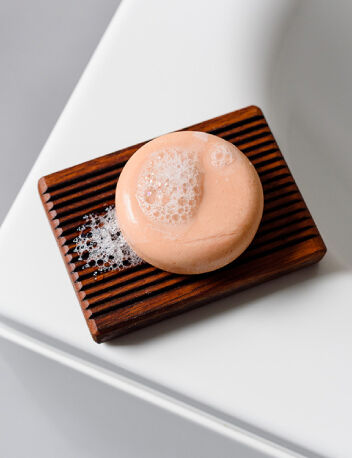
Sustainable Stars:
Beauty routine to help protect the environment
4 minute read
What does your wellness routine look like? You don’t need dozens of lotions and potions to be part of the beauty world. If you take a daily shower, wash your hands after being out and about, brush your teeth and comb your hair, then you’ve already got several grooming products and process to manage — each leaving a mark on more than just your face.
We often continue living with the same habits without thinking about sustainability or how our choices can affect the planet. Consider the contents in your bathroom – from sponges to razors for your skin and body, shampoo bottles to toothbrushes, our bathrooms alone contain large amounts of plastic and products that are potentially harmful to our environment, too. Some of the biggest offenders of sustainable beauty are products that promote convenience, such as makeup and baby wipes, which are the third most wasteful items in the world. Even worse, they can’t be recycled, don’t decompose, and clog our sewer systems. There are some simple steps to take action, however without sacrificing our need to feel fresh.
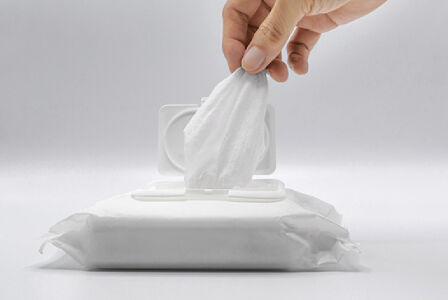
Some of the biggest offenders of sustainable beauty are products that promote convenience, such as makeup and baby wipes, which are the third most wasteful items in the world.
Sustainable Step #4:
Shower Sustainably By
Switching
To Products Sourced
From Natural Ingredients
Behaving more sustainably with your beauty routine is simpler than you may think, but a little guidance goes a long way. That’s why, as part of our Sustainable Stars series, we spoke to Sue Campbell, who’s founder of KIND2, a brand that specializes in solid bars of shampoo and conditioner. Why solids? Well, it’s estimated that the average woman is likely to use between 420 and 500 bottles of shampoo and conditioner over her lifetime – which amounts to a lot of plastic waste. And according to the environmental charity Surfers Against Sewage, that plastic can last for 450 years in a marine environment, and they never fully decompose, with microscopic pieces continuing to flow through our water systems. Factor in shower gels, toothpaste tubes and moisturizers, and the time we spend in the bathroom is putting our planet under huge pressure.

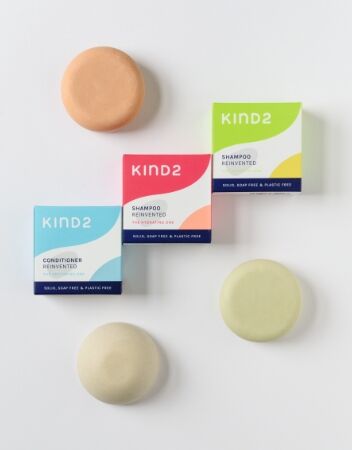
It was information like this, combined with the plastic pollution that Campbell witnessed first-hand on work and personal trips, that made her take action. “I kept seeing plastic pollution everywhere. Not just the beach and in the ocean, but in some of the most remote and beautiful places I visited. It was heartbreaking,” she says. “Then, when I learned that only 9% of the plastic ever made has been recycled, I realized that my efforts to be diligent in recycling were simply not going to be enough.”
The result is KIND2: high-performing shampoo and conditioner bars for the 21st century. The vegan formulas are free from parabens, plastics, sulphates, and silicone, yet still effective. Reducing your carbon footprint can start with your morning shower, and the products you use. But there’s so much more you can do to upgrade your beauty routine to be more sustainable. Here’s some advice from Campbell:
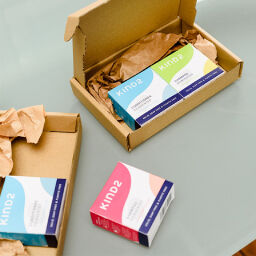
It’s estimated that the average woman is likely to use between 420 and 500 bottles of shampoo and conditioner over her lifetime – which amounts to a lot of plastic waste.
Review your routine and the products you currently use
“The most sustainable product is the one you already own, so next time you finish something, or get close to finishing it, consider (a) do I need to replace this (b) what are the more sustainable or eco-friendly products I could substitute?”
Do your research
"Now, with the help of the internet, finding information about sustainable beauty is easily available with an abundant amount of resources, thus helping you make more conscious, well-informed, eco-friendly choices compared to the past."
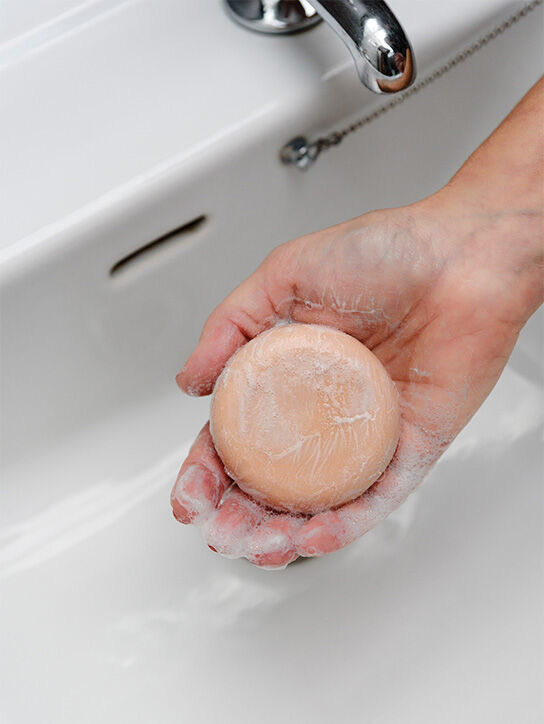
A good place to start is with a plastic audit
“What bottled products can be switched to solids? Think about the unnecessary packaging that comes with your purchases. By switching to a plastic-free shampoo bar, not only are you avoiding carbon-heavy manufacturing, but you are also steering clear of contributing energy used to create another plastic bottle while choosing to work toward a zero-waste lifestyle.

Consider the ingredients
“Most liquid products are 80% water, so you are literally washing your money down the drain. Soap, shampoo, conditioner, and face cleansing bars are all more concentrated and so last a lot longer. They’re perfect for travel, too.”
More eco-friendly beauty hacks
Being sustainable in your bathroom isn’t just about cutting down on shampoo bottles, here are some other items you can swap for more sustainable alternatives:
Toothbrushes – go for bamboo versions instead of plastic
Moisturizers and serums – look for glass bottles or recycled plastic
Razors – seek out plastic-free alternatives
Hairbrush – try brushes with wooden handles and bristles
Earbuds – try brands using bamboo
Seek out other products
“Deodorant, toothpaste, and moisturizers are good products to switch to a more sustainable version, too. Most eco-friendly products are in glass or aluminum – both more recyclable than plastic and the ingredients are typically more natural.”

Don’t use wet wipes
"One simple item to ax out of your routine is wet wipes or makeup remover wipes. You might be surprised that most of these are made from plastic – they don’t degrade in landfills, and shouldn’t be flushed because they clog our sewers. Yet, wet wipes can’t be recycled, so they continue to pollute and impact the earth negatively. Instead, why not make an easy swap to a clean alternative such as washable bamboo, cotton pads, or even cut up an old t-shirt into wipe-size pieces and create reusable cloth wipes."
You can find more tips – from food to fashion – from our Sustainable Stars on the highlights section of Instagram. Find out more about KIND2 here .
